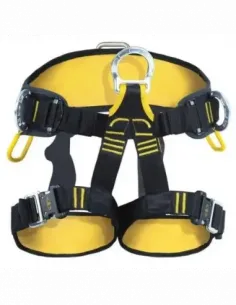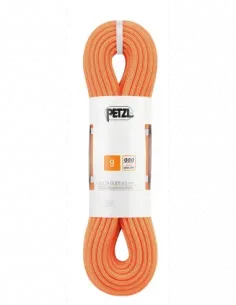Work Clothes
Working Pants
Seat Harnesses
Seat Harness Hero Pro Sit
Rigging Plates, Anchor Points and Swivels
Rigging Plate Air-Port 8
Fall Arrester
Fall Arrest Kit Air Kit 11 mm x 10 m Orange
Standard Helmets
Helmet Skyfall
Tapes and Anchors
Dyneema Webbing Sling St'Anneau 12mm
Full-Body Harnesses
Harness Astro Bod Fast
Rope Clamps
Emergency Ascender Tibloc (Orange)
Connectors
Carabiner Eashook Open
Ventilated Helmets
Helmet Ares AIR
Work Clothes
One-Piece Working Overall
Hats
Baseball Hat
Head-Lamps
Headlamp Tikkid
Tapes and Anchors
Open Loop Sling Anneau
Dynamic Ropes
Single Rope Volta Guide 9mm
Work at height equipment - safety first
When working at height or over a platform, it's very important to prioritize safety by using the appropriate equipment and protection. There is a lot of safety equipment that can ensure you are safe while working. It is important to inspect all work at height equipment regularly and ensure that it meets safety standards in your workplace. By prioritizing safety and using the correct equipment, workers can reduce the risk of accidents and injuries while working at height. Manufacturer's instructions will give you most info about the intended use of the gear and work load limits but in case of any hesitations about use od equipment it's best to reach out to a competent person.
Work at height - safety kits and access equipment PPE
- Ropes: High-quality, durable ropes are crucial for work at height, especially in activities such as rope access work, scaffolding, and rescue operations. The special design of the ropes provides adequate load-bearing capacity and flexibility for work. They need to be strong, flexible, and resistant to abrasions and cuts
- Harnesses: Safety harnesses are used to secure workers when working at height. They distribute the force of a fall over the body to prevent injury. . For working at height you need a 2 point harness with fall arrest attachment points on the front (Sternal) and back (Dorsal).
- Lanyards and lifelines: Lanyards and lifelines are connected to the harness to prevent falls. They can be used in conjunction with anchor points to provide secure attachment. A lanyard is a section of webbing or rope like material with a way to arrest your fall by using energy absorbers. It is one standard length and it attaches to the D-ring on your harness along with what you are tying off to. A lifeline is a cable (steel, stainless steel or plastic) that is securely fastened along the roof or at strategically determined locations with two or more suspension points.
- Helmets: Helmets are essential to protect the head from falling objects or impact injuries when working at height. EN 397 is a standard for industrial helmets and matches the risk related to construction sites or other hazard places where such product is crucial.
- Fall arrest systems: Fall arrest systems are designed to stop a fall in progress and minimize the impact on the worker’s body. They consist of body harnesses, lanyards or self-retracting lifelines and anchorage points. Fall protection is the most important issue while selecting your working at height equipment for elevated places.
- Accessory: Required equipment for work at height include carabiners, pulleys, and connectors. These products must be compatible with each other and meet the same safety standards to ensure a secure working environment. You can use tool holders, phone holders, accessory carabiners, leashes or whole belts designed to attach your equipment. You can also try webbing ladders or ear protectors dedicated for your selected helmet for your comfort.
- Kits: For workers and employers looking for a fast solution, specifically designed "Kits" for work at height can be great choice. These kits often bundle together essential safety equipment for specific types of work at height. It is also essential to keep track of yearly inspections to avoid malfunctioning of your personal fall protection system and work safely.












































